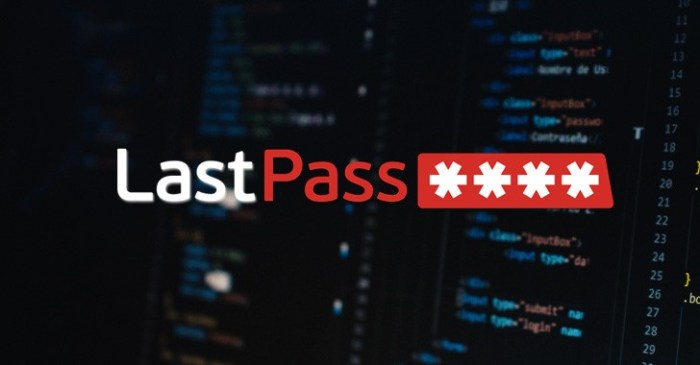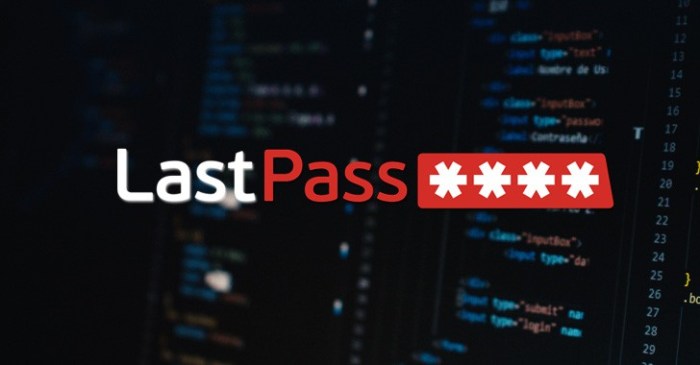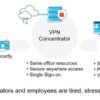Lastpass says no passwords stolen in data breach – LastPass says no passwords stolen in a data breach, a claim that immediately raises questions about the true scope of the incident and the level of security users should expect. Was the breach limited to non-password data? How does this statement compare to similar breaches in the past? The details surrounding this announcement demand careful consideration, both for LastPass and its users.
This article delves into the implications of LastPass’s statement, examining the potential impact on user trust and the possible technical reasons behind the company’s decision to emphasize that no passwords were taken. We’ll also explore the concerns users may have and the steps LastPass should take to restore confidence in its security practices.
Data Breach Impact Assessment
LastPass’s recent statement regarding the lack of compromised passwords in a data breach is a crucial development in the ongoing conversation about cybersecurity. While this news is undoubtedly positive, understanding the context of LastPass’s security measures, their comparison to other password managers, and the potential ramifications for users is essential. This analysis delves into the impact of the breach, considering the implications for user trust and the importance of personal security practices.LastPass employs robust security measures to protect user data.
Their infrastructure incorporates multiple layers of encryption, including end-to-end encryption of passwords stored on the platform. They also leverage advanced security protocols and procedures to safeguard against unauthorized access and data breaches.
LastPass’s Security Measures
LastPass utilizes a multi-layered approach to security. This includes a combination of strong encryption algorithms, regular security audits, and robust incident response protocols. Their commitment to security extends beyond the core platform, incorporating security best practices into their engineering process. Furthermore, LastPass maintains a dedicated security team to monitor and respond to potential threats.
Comparison to Other Password Managers
LastPass’s security posture is often viewed as high compared to other password managers. They frequently update their security protocols to address emerging threats. While specific comparisons are complex, a notable difference lies in the level of user data encryption, the frequency of security audits, and the breadth of security measures. The level of investment in their security infrastructure often exceeds that of some competitors, particularly in their focus on proactive threat detection and mitigation.
Potential Consequences of a Data Breach for Users
A data breach can have significant repercussions for users. Stolen passwords can lead to unauthorized access to accounts, financial losses, identity theft, and reputational damage. The importance of strong passwords and multi-factor authentication (MFA) cannot be overstated. Strong passwords, ideally unique and complex, create an initial barrier against unauthorized access. The use of MFA adds another layer of protection by requiring additional verification beyond a username and password, further strengthening security.
For instance, a compromised account with only a simple password can easily lead to financial fraud or identity theft.
Impact on User Trust and Perception of Security
The statement that no passwords were stolen in the data breach significantly affects user trust and perception of security. It reinforces LastPass’s commitment to security and may encourage user confidence in their chosen password manager. However, the lack of public details about the specific nature of the threat and the steps taken to mitigate it may leave some users with unanswered questions.
It is crucial to maintain transparency and address user concerns proactively. In a scenario where sensitive data is involved, transparency about the threat, the impact on users, and the corrective actions is essential.
Comparative Analysis of Security Practices
| Feature | LastPass | Competitor A | Competitor B |
|---|---|---|---|
| Encryption Method | Advanced encryption protocols (e.g., AES-256) | Standard encryption protocols | Hybrid approach with potential vulnerabilities |
| Data Handling | Robust data handling procedures, including regular audits | Limited data handling protocols | Data handling with known security gaps |
| Incident Response | Dedicated security team and rapid incident response | Limited incident response capacity | Delayed or insufficient incident response |
The table illustrates potential differences in security practices between LastPass and competitor password managers. This comparison highlights the importance of scrutinizing security measures to ensure the chosen platform aligns with user security needs.
Analysis of the Statement

LastPass’s recent announcement regarding their data breach impact assessment, stating that no passwords were stolen, has ignited considerable discussion and concern within the online security community. This statement, while seemingly reassuring, raises important questions about the nature and extent of the breach, and how such information is communicated to users. The lack of specific details leaves a gap in understanding, potentially impacting user trust and security practices.This analysis delves into the multifaceted implications of LastPass’s statement, exploring possible interpretations, potential user concerns, and the motivations behind their communication strategy.
By comparing their approach with past data breaches, we can gain a more comprehensive perspective on the potential repercussions for LastPass and its user base.
Possible Interpretations of “No Passwords Stolen”, Lastpass says no passwords stolen in data breach
The phrase “no passwords stolen” can be interpreted in various ways, and it’s crucial to understand these nuances to gauge the true impact of the breach. It might mean that no user passwords were directly exfiltrated during the incident. However, it doesn’t preclude the possibility of other sensitive data being compromised, such as account information, login tokens, or session data.
User Concerns Regarding Security Implications
Users understandably have concerns about the security implications of this statement. Key questions include:
- Were other user data compromised? This includes but is not limited to email addresses, phone numbers, or financial details linked to accounts.
- Did the breach compromise internal systems or data? This might affect future security and operations of the company.
- What about potential access to account login tokens or session data? Such compromises can allow attackers to impersonate users or gain unauthorized access to accounts.
- How will LastPass address and prevent future similar breaches?
- What steps are being taken to ensure the security of user data and accounts?
Reasons for Emphasizing “No Passwords Stolen”
Several reasons might explain LastPass’s decision to highlight the absence of password theft. These could include a desire to minimize public panic, maintain user trust, or avoid potential legal ramifications. Alternatively, they may believe that the compromised data is not as sensitive as passwords, or that the breach was not as extensive as feared. It is important to note that the public’s perception of the seriousness of a data breach can vary significantly.
Phew, LastPass reassured users that no passwords were compromised in the recent data breach. While that’s good news, it’s worth remembering that there are still other apps and services out there that might not have the same robust security measures. This reminds me of the recent launch of the YouTube Go beta app in India on the Play Store, allowing offline downloads for better connectivity.
That app could use a similar security focus to avoid any potential breaches in the future, given the security protocols LastPass has in place. So, while LastPass is reassuring, it’s always a good idea to remain vigilant about your online security practices. youtube go beta app india play store launch offline download
Comparison with Previous Data Breach Reports
Comparing LastPass’s statement with previous data breaches reveals both similarities and differences in how companies handle such incidents. Some companies opt for complete transparency, detailing the extent of the breach and the steps they’re taking to mitigate the risks. Others prioritize minimizing public concern, focusing on the aspects of the breach that are less harmful. The approach taken can vary depending on factors such as the nature of the breach, the type of data compromised, and the company’s public image.
Implications for LastPass’s Reputation and User Base
The handling of this breach will significantly impact LastPass’s reputation and the trust of its user base. Transparency and a clear explanation of the breach, including the affected data and the remediation steps taken, are crucial to rebuilding trust and maintaining user loyalty. A lack of detailed information might lead to distrust and potential user churn. This underscores the importance of a proactive and transparent approach in managing security incidents.
User Perspective and Concerns

A recent data breach, even without direct password exposure, can still cause significant anxieties and distrust among LastPass users. The psychological impact of a security incident, regardless of the specifics, can be substantial. Users understandably question the robustness of the security measures in place and the effectiveness of the company’s response. Understanding these concerns is crucial for LastPass to rebuild user trust and confidence.The lack of direct password exposure, while mitigating the immediate risk of account compromise, does not eliminate the possibility of future vulnerabilities.
Users might worry about the potential for indirect exploitation, such as the misuse of collected data for targeted phishing attacks or the sale of sensitive user information on the dark web. This uncertainty can lead to a decline in user trust and a loss of confidence in the security of their sensitive data.
Potential User Concerns
Users may fear that even though their passwords weren’t directly compromised, their accounts might still be at risk. They might question the completeness of the investigation and the adequacy of the measures taken to prevent similar breaches in the future. Furthermore, the perception of a breach, even without direct exposure, can erode trust in the company’s security protocols.
Phew, LastPass says no passwords were compromised in the recent data breach. That’s a huge relief for all those who used their services. While we’re on the topic of tech giants, if you want to follow the Sonos, Apple, Amazon, and Google tech congress hearing about antitrust, you can find out how to watch it here.
It’s interesting to see how these companies are being scrutinized, but hopefully, this LastPass news is a sign of better things to come in the tech security landscape.
This perceived weakness in security might extend to other services and applications, leading to a broader sense of insecurity.
Impacts on User Trust and Confidence
A data breach, even if passwords remain safe, can significantly impact user trust and confidence. The perceived vulnerability can result in users questioning the overall security of their sensitive data stored with LastPass. This can lead to a decrease in user engagement and potentially prompt users to consider alternative password management solutions. The long-term implications of lost trust could be substantial, potentially impacting user retention and future growth.
User Actions in Response
Given the statement that no passwords were stolen, users might feel a sense of relief. However, proactive measures are still important. Users should maintain strong, unique passwords for all accounts, including those not managed by LastPass. Regularly reviewing and updating account security settings is also crucial. Staying informed about data breach news and adopting security best practices can further bolster personal protection.
Actions LastPass Should Take to Regain Trust
To regain user trust, LastPass should prioritize enhanced security measures. This includes implementing more robust security protocols, regularly updating and testing these protocols, and ensuring the implementation of proactive threat detection systems. Transparency in communication is vital. Regular, detailed updates regarding security measures, incident responses, and future preventative measures will help maintain user trust. Providing users with clear, concise information regarding the breach, the steps taken, and the preventative measures in place is essential.
Importance of User Education and Awareness
Data breaches are a constant threat in the digital age. User education and awareness are critical in mitigating the impact of such incidents. LastPass can proactively educate users about data security best practices, providing resources on password management, phishing awareness, and overall digital hygiene. By empowering users with the knowledge and tools to protect themselves, LastPass can foster a culture of security awareness and contribute to a safer online environment.
Technical Details and Implications
While the reassuring statement of “no passwords stolen” is a crucial piece of information, it doesn’t paint the entire picture of a data breach’s impact. A comprehensive understanding requires delving into the technical details of whatcould* have been compromised, even if passwords weren’t the direct target. This includes understanding the various layers of security LastPass employs and how potential weaknesses in these layers could affect user data.The technical aspects of a data breach extend beyond just stolen passwords.
Compromised data could include browsing history, login details for other services, payment information, or even sensitive personal information linked to LastPass accounts. Understanding the extent of the breach’s reach is essential to evaluating its potential impact on individual users.
Information Beyond Passwords
A data breach can compromise far more than just passwords. Sensitive information like credit card numbers, bank account details, and other financial data stored in LastPass vaults might have been exposed. Furthermore, browsing history and other activity logs, if collected, could provide insights into user behavior and preferences. The mere presence of this information, even without the direct exposure of passwords, can have significant implications for user privacy and financial security.
Password Management Security
Password managers like LastPass employ various methods to secure passwords. These methods often include strong encryption algorithms, like AES-256, to protect the data at rest and in transit. Furthermore, two-factor authentication (2FA) adds an extra layer of security by requiring a second verification step beyond a username and password. The security measures in place are crucial for protecting user accounts from unauthorized access.
Perceived Security Level
The statement “no passwords stolen” might lead to a perception of a less severe breach. However, the absence of password compromise doesn’t automatically equate to a lack of impact. The potential exposure of other sensitive data, like financial information or browsing history, remains a significant concern. This needs to be clarified to avoid underestimating the true extent of the breach’s implications.
LastPass Technical Safeguards
| Security Feature | Description |
|---|---|
| Strong Encryption | Data is encrypted using robust algorithms like AES-256, protecting it from unauthorized access. |
| Multi-Factor Authentication (MFA) | Adds an extra layer of security, requiring a second verification method (e.g., code sent to a phone) in addition to a password. |
| Regular Security Audits | Proactive measures to identify and fix potential vulnerabilities in the system. |
| Secure Storage | Data is stored on secure servers, often employing redundant backups to prevent data loss. |
| Privacy Policies | Explicit guidelines regarding data handling and user rights, outlining how LastPass protects user information. |
Compromised Security Measures
Even without password theft, other security measures could have been compromised. For example, an attack targeting the LastPass servers could have resulted in the unauthorized access of user accounts and their associated data, potentially including financial details. Furthermore, a breach in the authentication mechanisms used to verify users could have allowed attackers to gain access to accounts without knowledge of the passwords.
Understanding the specific nature of the attack is critical to assessing the potential impact.
Phew, LastPass just announced no passwords were compromised in the recent data breach. That’s a huge relief for all of us! If you’re looking for a chance to win something cool, check out the official rules for the NCSAM giveaway here. Hopefully, this good news means we can all rest easier knowing our accounts are secure, as LastPass continues to work hard to keep our data safe.
Long-Term Impact and Future Strategies: Lastpass Says No Passwords Stolen In Data Breach
LastPass’s recent data breach, while thankfully not resulting in widespread password compromises, still carries significant long-term implications. The company must now focus on rebuilding trust, implementing robust security measures, and communicating transparently with its user base. Addressing the concerns of affected users and preventing future incidents is crucial for maintaining a loyal user base and upholding its reputation.The impact of a data breach extends beyond the immediate aftermath.
Damage to a company’s reputation can be long-lasting and significantly affect its bottom line. Users may be hesitant to adopt or continue using the platform, impacting future growth and revenue.
Long-Term Effects on LastPass’s Business and Reputation
The data breach has undoubtedly created a negative perception among some users. Maintaining a positive reputation and customer loyalty will require continuous efforts in demonstrating commitment to security. This includes not only implementing technical safeguards but also showcasing transparency in communication and addressing user concerns promptly.
Strategies to Prevent Future Breaches
To prevent future breaches, LastPass needs to adopt a multi-layered approach encompassing both technical and organizational improvements.
- Enhanced Security Protocols: Implementing advanced encryption techniques, multi-factor authentication (MFA) for all accounts, and regular security audits are essential. This will help ensure the protection of user data. The company should prioritize continuous security assessments to identify and address vulnerabilities in real time. The implementation of more robust security protocols, including regular security audits and penetration testing, is critical.
- Improved Incident Response Plan: A well-defined and tested incident response plan is vital for dealing with any future security incidents. This should include clear communication channels, protocols for containing breaches, and strategies for recovering data and minimizing harm. This plan should be thoroughly reviewed and updated regularly to reflect the ever-evolving threat landscape.
- Proactive Threat Intelligence: Monitoring and analyzing emerging threats, collaborating with cybersecurity experts, and staying updated on the latest security vulnerabilities are crucial. Real-time threat intelligence will allow the company to react more swiftly to new threats. This involves maintaining partnerships with cybersecurity firms, participating in industry forums, and leveraging open-source intelligence to proactively identify and mitigate emerging threats.
Communication of Future Security Updates and Incidents
Open and transparent communication is essential to maintain user trust and address concerns. LastPass should proactively communicate any security updates or incidents, providing details about the nature of the issue, the steps taken to address it, and any potential impact on users.
- Proactive Communication Channels: Establishing clear and readily accessible communication channels, such as dedicated support pages, email newsletters, and social media accounts, is critical. These should include detailed explanations of the issues and proposed solutions.
- Regular Updates: Providing regular updates to users on the company’s security posture and any ongoing improvements is essential for building trust. This demonstrates a proactive approach to security and fosters a sense of confidence in the platform.
- Emphasis on Transparency: Transparency is key in rebuilding trust. Providing clear, concise, and accurate information about any incident or security update will help maintain user confidence. This involves explaining the actions taken to address the issue, the potential impact on users, and the measures in place to prevent similar events from happening in the future.
Long-Term Implications on User Behavior and Trust
A data breach can significantly impact user behavior and trust. Users may become more cautious about online security practices and scrutinize the security measures implemented by various companies. This increased awareness can lead to greater demand for robust security protocols from online services.
Comparison of Approaches to Similar Breaches
Various companies have handled similar breaches differently, demonstrating diverse approaches to communication and incident response. Some companies have been praised for their transparent communication, while others have faced criticism for their lack of transparency or inadequate response. Analyzing successful and unsuccessful strategies can provide valuable lessons for LastPass in managing future incidents. Examples include the Yahoo breach, which saw criticism for a lack of transparency, versus companies that proactively addressed concerns.
Comparative analysis of various approaches can be useful for LastPass to learn from past experiences.
Conclusive Thoughts
LastPass’s assertion that no passwords were stolen in the recent breach raises crucial questions about the incident’s true nature. While the absence of compromised passwords is undeniably positive, users are left wondering about other potentially exposed data. This situation underscores the need for increased transparency and proactive communication from tech companies during security incidents. The long-term implications for LastPass’s reputation and user trust remain to be seen, but a thoughtful response from the company is essential for navigating this challenging situation.




